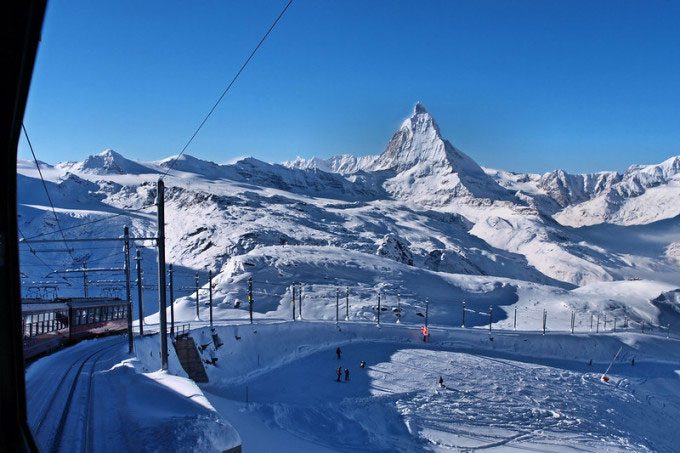Climate Change Drives Glacier Retreat, Prompting Countries with Glacier Borders like the Alps to Adjust Maps
Last year, Switzerland and Italy jointly adjusted their borders in the Alps due to rapidly receding glaciers. This is a challenge that many countries with natural structures marking their territories will face, New Atlas reported on December 11.

The Matterhorn peak in the Alps is changing rapidly. (Photo: New Atlas).
Fortunately, Switzerland and Italy have collaborated. Experts believe part of the reason is that this land is not privately owned, and the national border lies on a mountain peak, which has shifted into Italian territory in recent years.
After the adjustment in May 2023, Switzerland took nearly 18 months to approve the change, and Italy has yet to sign off on the revised border map. These changes will affect the borders in the Plateau Rosa, Rifugio Carrel, and Gobba di Rollin areas, which are near the Matterhorn – one of the famous landmarks of the Alps.
“With the melting of glaciers, these natural structures change and redefine national borders,” the Swiss government stated in a news release at the end of September, following the agreement on the map changes.
Despite differing opinions on climate change and global warming, glaciers worldwide continue to shrink, regardless of seasonal fluctuations and natural glacier movements due to internal deformation factors. The impact of changing mountain landscapes on local populations is garnering significant attention from the scientific community.
A report from the Swiss Academy of Sciences published in October indicated that in 2024, despite “extremely high snowfall in winter” – about 30% above average – large amounts of dust from the Sahara have accelerated ice melting, resulting in a 2.5% loss of glacier volume.
“The retreat and melting of glacier tongues continue due to climate change. In 2022 and 2023, a total of 10% of the volume of Swiss glaciers disappeared, the highest ever recorded. The figure of 2.5% this year is also above the average for the past decade,” the report stated. In a 2023 study, scientists modeled that a global temperature increase of 1.5 degrees Celsius would cause more than a quarter of the Earth’s current glacier surface to disappear by 2100.

The Matterhorn Gornergrat Railway is one way to ascend the Matterhorn from the Swiss side. (Photo: Peters/Flickr).
The Switzerland-Italy situation is not the only example of changing borders as the natural environment alters. Sálajiegna, a glacier on the Norway-Sweden border, features two tongues, one extending into Norway and the other into Sweden. Over the past few decades, Sálajiegna has receded about 20 meters per year. In 2013, these changes also led to altered access to water resources on both sides of the border. Additionally, glacier borders exist between Switzerland and Austria, Chile and Argentina. The Siachen Glacier in the Himalayas, where Pakistan, India, and China meet, holds significant geopolitical importance.
In 2014, researchers initiated the Italian Limes project and installed GPS sensors along a stretch of the Italy-Austria border in the Ötztal Alps. The monitoring system for glacier movement was enhanced two years later, with a network of 26 sensors providing GPS data for mapping software to create a “moving border” between the two countries. The two nations reached a preliminary agreement in 2006 to work together on a more flexible approach to this boundary.
Beyond territorial changes, other issues related to glacier borders remain. In Italy and Switzerland, tourist-heavy mountainous areas along the border are becoming more prone to landslides. This aligns with a study in the journal Nature regarding the increasing frequency and intensity of landslides in areas experiencing glacier retreat in the High Mountain Asia (HMA) region. This means that hazards occurring on one side of the border could significantly affect those on the other side.
According to Swiss Professor Adrian Brugger, the loss of glaciers in the Alps has made life for those living near the mountains much more dangerous, affecting both sides. “There is a fear of displacement in settlements with 500-year-old houses. People live with a suitcase next to their bed,” Brugger stated.


















































